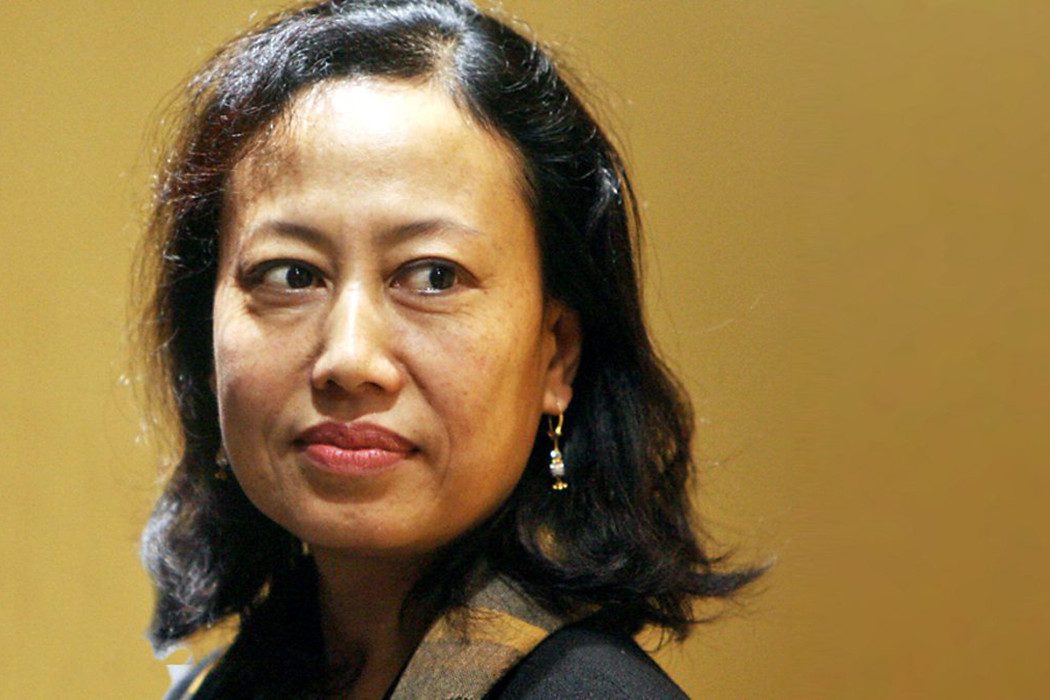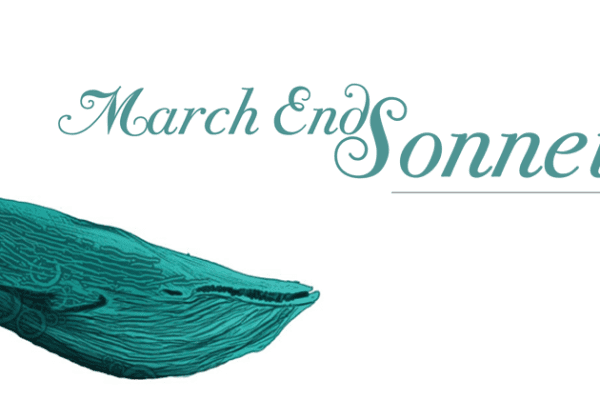The poets of the Northeast articulate marginality and negotiate the challenge of representing the past from the unspoken but inexorable reality of the present.

Poets such as Temsula Ao, Mamang Dai and Cherrie L Chhangte articulate marginality and build a literary paradigm for a Northeast discourse. Concerned with issues related to land, sacred places, education stemming from a communal space, they negotiate the challenge of representing the past from the unspoken but inexorable reality of the present.
Mamang Dai (b. 1957; Pasighat, East Siang District, Arunachal Pradesh) was formerly a civil servant but currently a journalist and a writer from the Adi community. She is also the founder of the Arunachal Historical Society. She has written extensively on the cultural history of Arunachal Pradesh and is also member of the North East Writer’s Forum. Her published works include Arunachal Pradesh: The Hidden Land, River Poems, Mountain Harvest: The Food of Arunachal Pradesh and The Legends of Pensam.
“This is not the poetry of unquestioning ‘nationalism’ in the face of a fear of loss of identity and encroachment of territory and cultural values, but a nervous internalization of the increasingly complex politics of the region . . . ”
A versatile poet, academician and storyteller, Temsula Ao (b. 1945) is one of the prominent contemporary authors from the Northeast, who reconfigures the structural boundaries of literary genres in her work. A retired professor at the Department of English, and former dean of the School of Humanities and Education, at the North-Eastern Hill University (NEHU) in Shillong, Temsula is the author of several volumes of poetry, two collections of short stories and The Ao Naga Oral Tradition, published by Bhasha in 1999 and selected as one of the 100 most influential books of the century in a series called ‘Shangharsh Shatak’. She experiments with multiple genres within a single work—fiction, poetry, historical narrative, and memoir.
Educated in Shillong, Cherrie L Chhangte (b. 1977; Aizawl, Mizoram) received her PhD from NEHU and is now a lecturer in English at Mizoram University. She is a prolific poet from the younger generation of litterateurs from Northeast India.
A gendered experience of change, place, and belonging has informed their experiences in socio-political and cultural territories. Through their poetry, mainstream forms are revitalized with the usage of traditional forms of storytelling. Using images from daily life, a forever-transforming landscape and socio-political struggles, the poets create different registers of truth, and culturally mediated knowledge.
In ‘The Voice of the Mountain’, Mamang Dai etches a landscape that reflects historical struggles for identity. She writes:
The other day a young man arrived from the village.
Because he could not speak he bought a gift of fish
from the land of rivers.
It seems such acts are repeated:
We live in territories forever ancient and new,
And as we speak in changing languages
I, also, leave my spear leaning by the tree
and try to make a sign.
According to her, land offers a source of sustenance as well as a source of inspiration. The separation of land and indigenous peoples has been a historical truth and accounts for the devastation and deprivation of many Indigenous peoples. The voice of the mountain reiterates:
I am the chance syllable that orders the world
instructed with history and miracles.
Mamang Dai advocates love for all beings and all things as the crucial method for ushering in peace and healing for Indigenous peoples and everyone on earth.
I am the place where memory escapes
the myth of time,
I am the sleep in the mind of the mountain.
The inability to listen to the landscape has also resulted in the misuse of the ecosystem, thereby disrupting ecological harmony.
Peace is a falsity.
A moment of rest comes after long combat.
Contemporary ecocide, according to many indigenous writers, has been responsible for social and political struggles with mainstream society. For Temsula Ao, storytelling is a powerful weapon of subversion, of protest, representing the power of man in shaping reality through language. In the poem ‘The Old Story Teller’, the agency of storytelling offers the possibility of change:
So I told stories
As my racial responsibility
To instill in the young
The art of perpetuating
Existential history and essential tradition
To be passed on to the next generation.
Language becomes a metaphor for potential change. Stories within the fabric of northeastern folklore provide the theoretical framework of their writing.
Temsual Ao writes:
The rejection from my own
Has stemmed the flow
And the stories seem to regress
Into un-reachable recesses
Of a mind once vibrant with stories
Now reduced to un-imaginable stillness.
According to the Ao-Nagas, once upon a time they had a script inscribed on a hide and hung on a wall for all to see and learn. A dog pulled it down and ate it.
The poet also utilises the opportunity to incorporate oral traditions within the written:
So when memory fails and words falter
I am overcome by a bestial craving
To wrench the thieving guts
Out of that Original Dog
And consign all my stories
To the script in his ancient entrails.
According to the Ao-Nagas, once upon a time they had a script inscribed on a hide and hung on a wall for all to see and learn. A dog pulled it down and ate it. Since then, all aspects of Ao-Naga life have been preserved in the collective memory of the people and passed down orally from one generation to another.
In a poem entitled ‘The Spear’, Temsula Ao introduces the complex ritual of genna. (Genna is a term in Nagamese, the lingua franca of Nagaland, to refer to festivals as well as the rituals and prohibitions associated with them.) A hunter is moved and tormented by the mindless killing of a doe and her newborn by his spear. He erects a genna around the dead doe. He returns home to his beloved and prays for the safety of his “seed” in her womb.
To protect my seed
From mindless stalkers
Such as me
For now I knew
It was not the spear alone
That caused it all.
For poets from Northeast India, articulating polyphonic voices that go beyond the presence of insurgency and terrorism has been of primal importance.
The importance of stories is emphasised by Mamang Dai as well. In ‘An Obscure Place’, she writes:
The history of our race begins with the place of stories.
We do not know if the language we speak
belongs to a written past.
Nothing is certain.
For poets from Northeast India, articulating polyphonic voices that go beyond the presence of insurgency and terrorism has been of primal importance. As a response to the quietude of post-insurgency Mizoram, Mona Zote states:
That word ‘quietude’ carries a little eddy behind it. . . . We lost ourselves in the insurgency—an insurgency that need not have happened, by the way. Something left us. And we have grown a tissue over the wound but the scar is festering untended.
In ‘What Does An Indian Look Like’, a scathing diatribe against mainstream responses to the “ethnicity” of Northeast India, Cherrie L Chhangte interrogates the very concept of India as a “Celebrated land of diversity” reflected in “Tourist brochures, colourful and vibrant.” She concludes with a bitter indictment of stereotypical identities:
I am a curiosity, an ‘ethnic’ specimen.
Politics, history, anthropology, your impressive learning,
All unable to answer the fundamental question—
‘What does an Indian look like?’
—An Indian looks like me, an Indian is Me.
Chhangte interrogates the very concept of India as a “Celebrated land of diversity” reflected in “Tourist brochures, colourful and vibrant.”
Chhangte insists on a space of integration and connection, and not only one of confrontation.
A tenuous relationship with the Indian state, political warfare, stone ancestors, swift rivers, primeval forests, misty pine slopes, red cherries, gridlocked streets are part of the poetic imagination from the Northeast. The poets offer a weave of nuanced storytelling, complex narratives, deep rootedness to land and language and poignant moments of paradoxes.
Works cited:
- Ao, Temsula. ‘Blood of Others’ in Tilottama Misra (ed.) The Oxford Anthology of Writings from North-East India: Poetry And Essays(Oxford University Press, New Delhi, 2011, Second Impression 2013)
- Ao, Temsula. ‘The Old Story Teller’ in Tilottama Misra (ed.) The Oxford Anthology of Writings from North-East India: Poetry And Essays(Oxford University Press, New Delhi, 2011, Second Impression 2013)
- Ao, Temsula. ‘The Spear’ in Tilottama Misra (ed.) The Oxford Anthology of Writings from North-East India: Poetry And Essays(Oxford University Press, New Delhi, 2011, Second Impression 2013)
- Chhangte, Cherrie L. ‘What does an Indian Look Like’ in Tilottama Misra (ed.) The Oxford Anthology of Writings from North-East India: Poetry And Essays(Oxford University Press, New Delhi, 2011, Second Impression 2013)
- Chhangte, Cherrie L. ‘Plea’ in Tilottama Misra (ed.) The Oxford Anthology of Writings from North-East India: Poetry And Essays(Oxford University Press, New Delhi, 2011, Second Impression 2013)
- Dai, Mamang. ‘An Obscure Place’ in Tilottama Misra (ed.) The Oxford Anthology of Writings from North-East India: Poetry And Essays(Oxford University Press, New Delhi, 2011, Second Impression 2013)
- Dai, Mamang. ‘The Sorrow of Women’ in Tilottama Misra (ed.) The Oxford Anthology of Writings from North-East India: Poetry And Essays(Oxford University Press, New Delhi, 2011, Second Impression 2013)
- Dai, Mamang. ‘The Voice of the Mountain’ in Tilottama Misra edited The Oxford Anthology of Writings from North-East India: Poetry And Essays(Oxford University Press, New Delhi, 2011, Second Impression 2013)
- Ngangom, Robin. ‘Alternative Poetry of the Northeast.’ Muse India, Issue 32. Jul-Aug 2010. (accessed 20/11/2015)
- Zote, Mona. ‘Building the universe of the poem’. The Hindu, 1 January 2011. (accessed 20/11/2015)


